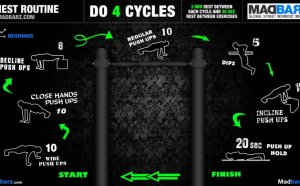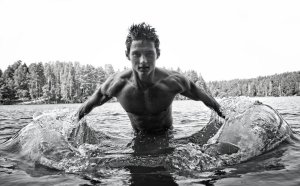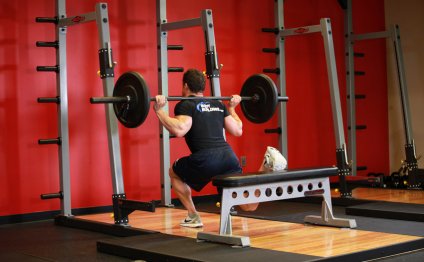
Quads Workout for mass
 Leg day is as brutal as it gets. If you can walk up the stairs after your workout, you're probably not doing it right. But what if you are doing it right and the only thing that seems to be growing is, well, your butt? Sure, thick glutes come with a well-developed lower body, but sometimes you want to minimize your gluteus and maximize your quads.
Leg day is as brutal as it gets. If you can walk up the stairs after your workout, you're probably not doing it right. But what if you are doing it right and the only thing that seems to be growing is, well, your butt? Sure, thick glutes come with a well-developed lower body, but sometimes you want to minimize your gluteus and maximize your quads.
If you want to build monster quads, you've come to the right place. These eight strategies will help you craft a leg workout to supersize your quad development. They include specific ways to bring up your quads while minimizing the emphasis placed on your posterior, though we can't go so far as rewiring your DNA.
One obvious strategy is to add quad-specific exercises, but variations of common exercises in terms of foot placement and depth of squatting can also play a role in muscle recruitment. We'll also give you a few intensity-boosting techniques to help push your leg training into the new growth zone. Let's add some air to your tires!
Start With Squats
Most leg workouts start with free-weight squats—and rightly so—since the squat is the single-best overall thigh builder known to man. Despite the fact that you can't specifically isolate the quads with a squat, the movement is essential if you want to build big legs, and there are ways to increase quad involvement.
"The squat is the single-best overall thigh builder known to man."
Though it's not always a good idea to squat on a heel board, because it shifts your center of gravity slightly forward, which means the quads take on a greater portion of the workload. Instead of getting fancy with foot position, a shoulder-width stance with your feet turned slightly outward will generate the most power. If you like to experiment, you can position your feet in or out just a few inches to slightly alter the muscle-recruitment pattern.
 Don't be afraid to use challenging weights here. Pyramiding up in weight to a few low-rep sets (as low as 6) will help you increase your strength. On those heavy sets, a spotter is useful to help you push past previous personal bests with your weight or reps.
Don't be afraid to use challenging weights here. Pyramiding up in weight to a few low-rep sets (as low as 6) will help you increase your strength. On those heavy sets, a spotter is useful to help you push past previous personal bests with your weight or reps.
Compound Your Quads
Some compound exercises are better than others at recruiting the quads, and the machine hack squat is just such a movement—especially if you place your feet fairly low on the machine's platform. Low foot placement will target the quads to a greater extent than high foot placement by increasing the degree of knee flexion/extension.
Higher foot placement reduces knee flexion/extension, and thereby takes some muscular stress off the quads, so get your feet low and be sure to keep your heels down during your hack squats. However, if you have any kind of knee pain, you may want to avoid this technique because of the increased stress on the knee and connective tissues.
If you did your first exercise for sets of 6-8, knock out sets of 8-10 reps on the hack squat. The multiple relative intensities are great for increasing overall muscular development.
Partial Reps, Full Gains
"When combined with full-range reps, partial squats can actually be a solid component of your quad-building strategy."
Ever see a guy load up a heavy weight on a squat or hack squat and descend just a few inches? That guy is doing partial reps, and he's probably doing them just to impress himself. However, when combined with full-range reps, partial squats can actually be a solid component of your quad-building strategy.
 Keep in mind that partial squats are counterproductive if you're trying to build your glutes and hamstrings, because those muscle groups work harder the deeper you go. Consequently, if you don't bring your thighs to a point at which they're parallel with the floor, your posterior muscles won't activate. Shallow squats predominantly target the quads, which are more active over the top half of the move.
Keep in mind that partial squats are counterproductive if you're trying to build your glutes and hamstrings, because those muscle groups work harder the deeper you go. Consequently, if you don't bring your thighs to a point at which they're parallel with the floor, your posterior muscles won't activate. Shallow squats predominantly target the quads, which are more active over the top half of the move.
But by selectively doing partial squats—or machine hack squats—with heavy weight, in conjunction with full-range moves, you can emphasize your quads and build massive size. With partials, you limit your training to a range of motion over which you're particularly strong—above the so-called squat "sticking point"—so you can overload the weight. Pile on a weight that's about 30 percent more than you can do for the full range of motion and do these partial hacks for sets of just 6 reps.
Love the Leg Press
Leg presses can also emphasize the quads, but you'll want to follow the same rationale about keeping your feet low on the sled. Sure, it's harder than using a higher foot position, but if you're looking to zero-in on the quads, keep it low.
You can use a closer foot position to target the outer quads to a greater degree. Use a wider stance to work the inner thigh and more thoroughly exhaust all areas of your quads.
"Keep your feet low on the sled. It's harder than using a higher foot position, but if you're looking to zero-in on the quads, keep it low."
Isolate to Annihilate
Single-joint exercises like leg extensions should never be confused with major mass-builders for the quads, but at the end of a demanding thigh workout extensions can isolate the quads to exhaust every last muscle fiber. Because extensions are single-joint movements, there's no added contribution from the hamstrings or glutes here.
Use a slightly higher rep range (10-12) than what you'd do for multi-joint movements. Like other isolation moves for other body parts, these are best done at the end of your leg workout. To boost the intensity of this final exercise, consider combining it with an advanced technique to ensure you've exhausted every last muscle fiber (see ).
Pre-Exhaust Your Quads
It's common to start leg day with a few warm-up sets on the leg extension, but those sets are never done to muscle failure. But what if you did a few heavy sets to muscle failure?
That's called a pre-exhaust, and it entails doing a single-joint movement like the leg extension before your multi-joint squats and leg presses. Reversing the order means that, while your quads are fairly pumped before even attempting your first set of squats, your glutes and hamstrings are still rather fresh because they haven't had to do any work yet.
Essentially, these other two muscle groups are now far stronger—relatively speaking—at this point compared to your quads because you isolated the quads right off the bat. That means that neither your hamstrings nor your glutes are likely to fatigue first during a given set—which would necessitate ending your set—because they're much fresher relative to your quads.




INTERESTING VIDEO
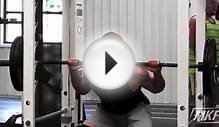
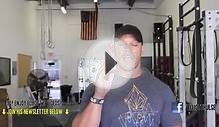
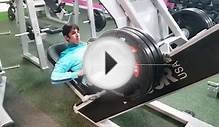
Share this Post
Related posts
Bodyweight Workout for mass
It’s important to note that bodyweight training is by no means a replacement for lifting, but rather another tool for muscular…
Read MoreBest Shoulder Workout for mass
When it comes to building an aesthetic figure, nothing is more important than big, broad shoulders. A well-formed set of…
Read More